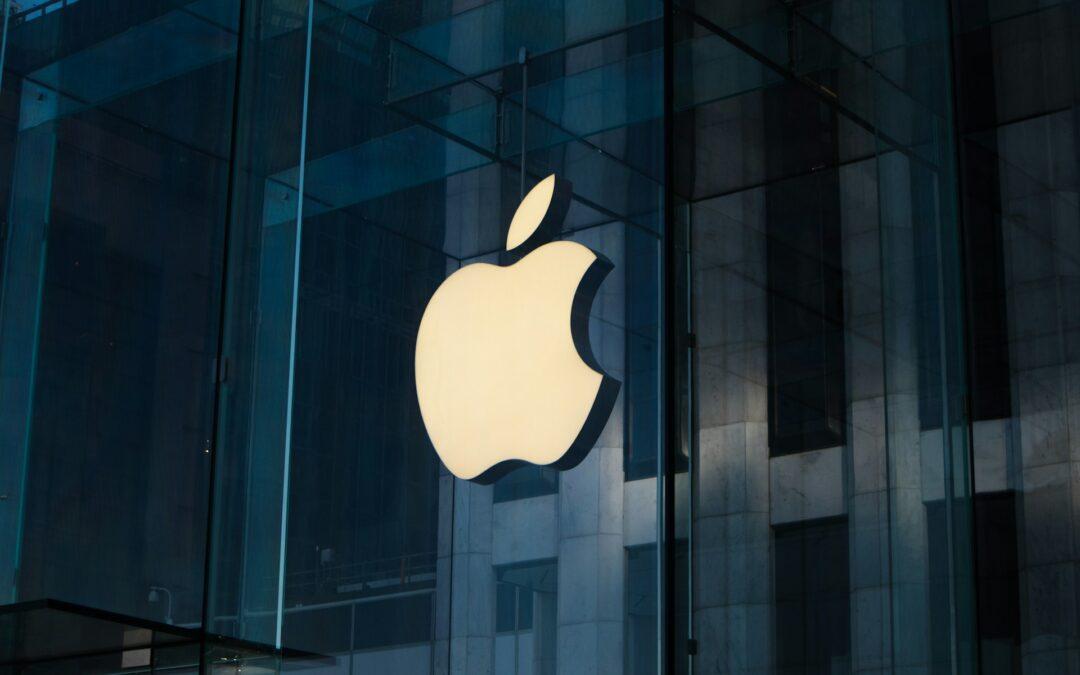What Are Consumable Goods?
Consumable goods, also known as consumables, refer to products that are intended for immediate use and are expected to be depleted or used up after a single use or within a short period. These items are typically purchased frequently as they are essential for daily needs or activities. Consumable goods encompass various categories, including food and beverages, toiletries, office supplies, and medical supplies.
Types of consumable goods include perishable items such as fresh produce, dairy products, and baked goods, as well as non-perishables like canned goods, household cleaning supplies, and stationery. Consumables are distinguished from durable goods, which are products with a longer lifespan and are not quickly consumed or used up.
Consumable goods play a vital role in households, businesses, and industries, as they are continually replenished due to their temporary nature. Examples of consumable goods range from groceries like fruits, vegetables, and packaged foods to items like printer ink cartridges, batteries, and personal care products.
In summary, consumable goods are everyday items designed for immediate use or consumption, serving essential purposes in various aspects of daily life, and are regularly replaced once depleted. Their significance lies in their recurring need and frequent purchase, making them a fundamental part of consumer behavior and economic activity.
List Of The Most Popular Consumable Goods
1. Bread
2. Coffee
3. Toothpaste
4. Gasoline (fuel)
5. Milk
6. Fertilizers
7. Bandages
8. Dish soap
9. Printer paper
10. Deodorant
11. Livestock feed
12. Pet food
13. AA batteries
14. Scented candles
15. Salt
16. Foundation (cosmetics)
17. Beer
18. Cooking oil
19. Plastic forks, knives, spoons
20. Chocolates
21. Latex gloves
22. Hair dye
23. Spray air fresheners
24. Incense sticks
25. Charcoal briquettes
26. Surgical masks
27. Logs
28. Potting soil
29. Ketchup
30. Energy drinks
31. Fishing bait worms
32. Tea
33. Diesel (fuel)
34. Antiseptics (medical supplies)
35. Eggs
36. Soft drinks
37. Shampoo
38. Envelopes
39. Propane (fuel)
40. Pain relievers (e.g., ibuprofen)
41. Laundry detergent
42. Ink cartridges
43. Ink cartridges
44. Lotion (personal care)
45. Litter for cats
46. Pepper
47. Mascara (cosmetics)
48. Wine
49. Paper plates
50. Candies
51. Hair spray
52. Pesticides
53. Rice
54. Bottled water
55. Soap
56. Kerosene (fuel)
57. Prescription medications
58. All-purpose cleaner
59. Pens
60. Feminine hygiene products
61. Flea/tick treatments
62. Mustard
63. Cinnamon
64. Lipstick/Lip gloss
65. Spirits (vodka, whiskey, rum, etc.)
66. Disposable cups
67. Chewing gums
68. Hair gel
69. Plant seeds
70. AAA batteries
71. Essential oils
72. Fresh vegetables
73. Juice
74. Toilet paper
75. Natural gas (fuel)
76. Perfumes
77. First aid kits
78. Disinfectant wipes
79. Bleach
80. Sticky notes
81. Sunscreen
82. Garlic powder
83. Eyeliner
84. Liqueurs
85. Plastic straws & paper straws
86. Hair conditioner
87. Mulch
88. Staples
89. Peanut butter
90. Flour
91. Nail polish
92. Razors
93. Lip balm
94. Honey
95. Champagne
96. Napkins
97. 9-volt batteries
98. Pickles
99. Car air fresheners
100. Ice cream
Methodology for Compiling the Top Selling Consumable Items List
We conducted an extensive study focusing on popular consumable product categories that align with consumable goods. This involved in-depth market analysis to identify the most high-usage items. Within each category, we scrutinized available online sales data, customer feedback, and market trends to compile this list of top-selling products.
Examples of Non-Consumable Items
Non-consumable goods refer to items that have a prolonged lifespan and aren’t intended for immediate consumption. These goods are durable and meant for long-term use, such as appliances, furniture, and electronics. Unlike consumable goods, which are used up or depleted after one use, non-consumables can be reused multiple times without being completely consumed or destroyed. Non-consumable goods retain their functionality and value over an extended period, making them valuable assets for individuals and businesses.
Non-consumable items are those that are not used up or depleted with use, and they often have a longer lifespan. These items often retain value, whether financially or sentimentally, and can be cherished for years, making them excellent non-consumable investments. Here are 20 examples of them:
- Books: They provide endless knowledge and can be passed down through generations.
- Jewelry: Timeless pieces that can hold sentimental value and often appreciate in worth.
- Artwork: Paintings, sculptures, or unique artistic creations that can last for generations.
- Musical Instruments: Well-maintained instruments can last a lifetime and beyond.
- Furniture: High-quality furniture pieces, like solid wood tables or chairs, can endure for decades.
- Vehicles: Cars, motorcycles, bicycles, and boats.
- Tools: Quality tools for woodworking, mechanics, or other trades can last a lifetime.
- Collector’s Items: Rare coins, stamps, or limited-edition items retain value over time.
- Antiques: Pieces of historical significance that often gain value as they age.
- Electronics: High-end gadgets or devices that are well-maintained can last for years.
- Kitchenware: Quality pots, pans, or knives made from durable materials.
- Fine China: Handcrafted and delicate, often passed down through generations.
- Photographs: Printed or framed memories that can last indefinitely.
- Sporting Equipment: Well-made sports gear, like a quality tennis racket or golf clubs.
- Heirlooms: Family treasures that hold sentimental value and are passed down.
- Handcrafted Items: Custom-made pieces by artisans or craftsmen.
- Watches: Timepieces that can last a lifetime with proper care.
- Camping Gear: Durable tents, backpacks, or camping stoves designed for longevity.
- Instruments of Knowledge: Telescopes, microscopes, or laboratory equipment.
- Home Appliances: High-end appliances built for longevity, like a reliable refrigerator or washer/dryer.
Consumable vs. Non-consumable Items Roles in Our Lives
Consumable items are those goods that are used up or depleted after a certain period of use, like food, beverages, toiletries, and fuel. Their distinctive feature lies in their limited lifespan, prompting frequent repurchase. Consumer behavior with consumables is driven by necessity, preference, and sometimes even social or cultural influences. For instance, people might choose certain foods due to taste preferences or dietary needs, while others might opt for specific brands of toiletries due to personal preferences or marketing influence.
On the other hand, non-consumable items, also known as durable goods, have a longer lifespan and can be used repeatedly over an extended period. These include items like furniture, electronics, vehicles, and appliances. Consumer behavior regarding non-consumables often involves more considered decision-making due to their higher costs and longer-term implications. Factors such as quality, brand reputation, functionality, and durability heavily influence purchasing choices. For instance, individuals may research extensively before buying a laptop or a car, considering performance, features, and reviews to ensure a satisfactory long-term investment.
Understanding these distinctions is crucial for businesses. Companies selling consumables often focus on replenishment strategies, aiming to create brand loyalty through consistent quality and marketing. On the contrary, those dealing with non-consumables prioritize factors like innovation, customer service, and creating lasting value to foster repeat business and positive word-of-mouth.
In essence, consumable items are frequently purchased necessities or preferences with shorter lifespans, while non-consumables involve more deliberate, less frequent purchases with longer-term usage. Both types significantly influence consumer behavior and market dynamics, guiding businesses in their strategies and customer interactions.
Consumable vs. Non-consumables: Impact on Consumer Behavior
Consumable items, with their shorter lifespan, often prompt more frequent purchases. This repetitive buying behavior can be influenced by various factors, including pricing, convenience, and marketing strategies like promotions or packaging. Businesses in this space often focus on maintaining a steady supply chain, ensuring product availability, and enhancing customer loyalty through rewards programs or subscription models. For example, grocery stores might offer discounts for bulk purchases to encourage consumers to buy more frequently.
Non-consumable items, due to their longer lifespan, lead to less frequent purchases and a more deliberative decision-making process. Consumers tend to conduct extensive research, compare options, and consider factors like durability, warranty, and resale value before making a purchase. Businesses selling durable goods emphasize product innovation, customer support, and sometimes financing options to attract and retain customers. Additionally, these companies often invest in after-sales services and warranties to reassure buyers about their investment’s longevity.
The digital age has also influenced consumer behavior in both categories. E-commerce platforms have made consumables more accessible, with subscription models simplifying the repurchase process for items like household supplies or personal care products. For non-consumables, online reviews, comparison websites, and social media play a significant role in shaping consumer decisions. Consumers now have access to vast amounts of information that influence their choices and purchasing behaviors.
Moreover, the distinction between consumables and non-consumables isn’t always rigid. Some products blur the lines, like smartphones. While they are durable goods, the constant release of newer models often prompts more frequent upgrades, mimicking consumable-like behavior in a traditionally non-consumable category.
Understanding these nuances helps businesses tailor their marketing strategies, supply chain management, and customer service approaches accordingly. Whether it’s ensuring the availability of consumables or highlighting the durability and value of non-consumables, companies adapt their approaches to meet the diverse needs and behaviors of consumers in these different product categories.
Read also: Top 30 Best Personalization Business Ideas
Recommended Articles

TOP 40 Fire-Related Business Ideas to Start in 2024
When we think about fire, it's often about its dangers or the essential role it plays in our daily lives, from cooking to keeping us warm. Yet,...

Is Apple About to Face Tough Times?
Apple, a paragon of innovation and a titan in the tech industry, stands at a critical crossroad. The fiscal year of 2023 unveiled a stark reality:...

Top 30 Business Ideas Near Highway & Guide
If you're considering starting a business near a highway and are on the hunt for the most profitable ventures, you've come to the right place....

TOP 25 Catering Business Ideas for 2024
If you're looking to start a business in the food industry, exploring catering business ideas for 2024 might be the perfect path for you. The catering world offers a wide range of opportunities, from small, intimate gatherings to large-scale events, allowing for...

30 Types of Clothing Stores – Shop Definitions & Examples
In this article, we have compiled a list of the 30 most common types of clothing stores. At first glance, it might seem that a clothing store is simply a place where clothes are sold, suggesting that there wouldn't be many variations among them. However, the reality...
Most Read
Best Business Ideas Near School – TOP 30 Ideas
In this article, we showcase the top business ideas for establishing ventures near schools. Schools are bustling hubs where students' diverse needs create numerous opportunities for purchases before, during, and after school hours. Many of these needs can be...

TOP 100 Luxury Services List
In this article we gathered 100 of the most luxurious services available in the world, providing a glimpse into the opulent lifestyles of the ultra-wealthy. Whether you're looking to indulge in a world-class spa treatment or take a private helicopter tour of a remote...
TOP 40 Products to Sell in the UK Online in 2024
Below we have compiled a breakdown of the best products to sell in the UK together with the best product categories to sell to British consumers. The demand for the following products is high and they are particularly popular in the UK. The following summary is based...
30 Highly Profitable Meat Business Ideas for 2024
In 2024, the meat industry continues to thrive as a lucrative sector for entrepreneurs and investors alike. With an increasing global population and the demand for diversified meat products on the rise, starting a meat business presents a compelling opportunity for...
